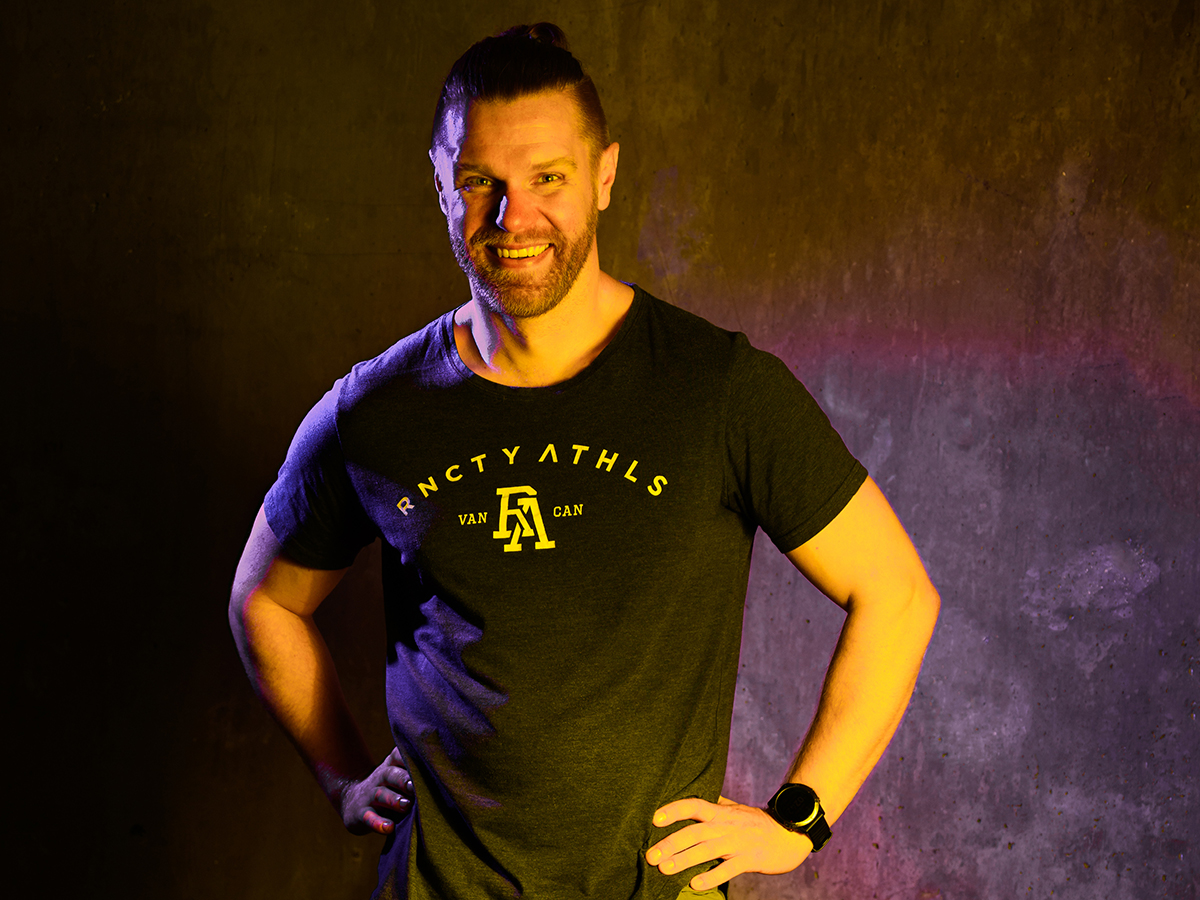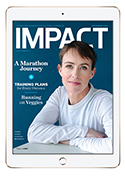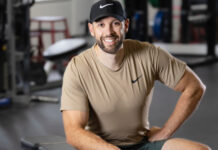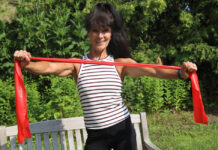According to Yale Medicine, the average injury rate of runners is 65%. This is largely because running is so accessible and easy to do; it is also due to the lack of focus on technique, as well as muscle imbalances.
If coaches were to take the same approach to teaching a deadlift as many do to teaching running, then any rep that lifts the bar off the ground would be considered a good rep, regardless of form (like how rounded the athlete’s back was). After a good rep? Add more weight of course!
No good coach or athlete would ever take this approach to lifting, yet it is the exact approach taken to running – “if I can get from A to B then I am a good runner and I should run farther!” And this is why we end up with a 65% injury rate.
Here are a few quick, easy exercises you can add to your running routine to help remove muscle imbalances as well as refine your form to minimize injury and increase your pace without increasing your effort (yes, magic, I know).
Running Strength
Single Leg Squat / Pistol
The single-leg squat is one of the best strength movements for runners thanks to its demand for mobility and stability in the hips, knees, glutes, pelvis and core. It is not an easy movement to perform, so make sure you follow the appropriate progressions.
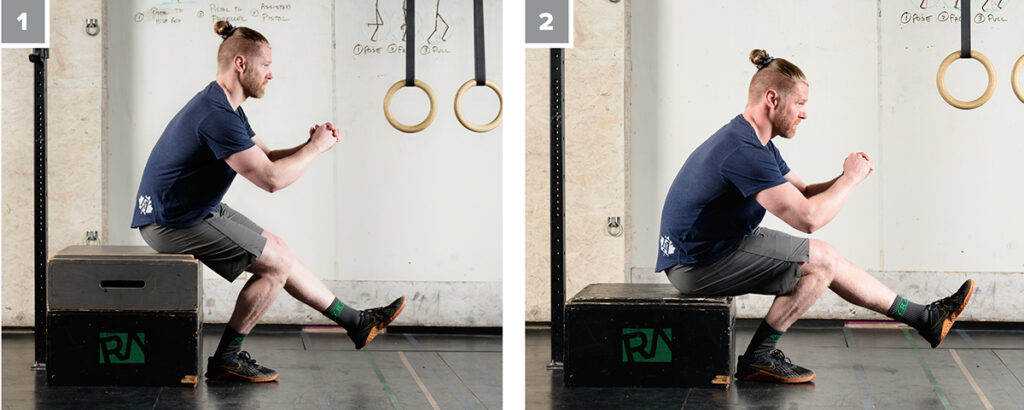

Cues
- Focus on keeping your heels down on the ground
- If needed elevate your heel (no more than a half inch) on a stable surface
- Don’t worry about bending over or trying to keep your chest up like a typical squat
- Try not to sit or drop onto your box/bench/chair – the goal is control!
- If you find a progression challenging, stick to it for a couple weeks and let your body adapt & adjust before moving to the next level
Progressions
Your goal is to perform 3 sets of 10 reps on each leg 1 to 2 times per week as part of your strength training.
- Squat to high box: Start by squatting to something high that you can touch your butt to and come back up from.
- Squat to parallel box: Each week, try to lower the height of the object by 1 to 2 inches until you cannot maintain control all the way to the box (i.e. you ‘fall’ onto it).
- Squat with support: Once you can touch an object with your hips parallel to the object or floor (typical squat depth), start utilizing a ring or suspension straps to help you balance as you go lower.
- The single leg squat: The end goal is to be able to perform 5 reps per leg unassisted. Don’t worry – depending on where you start this could take a long time – don’t rush it.
Running Skill
As you develop the strength and mobility for running by working on your single leg squat, the next important step is to focus on your technique. Just because you can run from A to B does not mean you’re necessarily doing it well or efficiently. You should not have any pain when running (knees, hips, ankles, shins). If you do, make sure to see a physiotherapist before continuing to run.
The Pose Method®
This method is a way of breaking down the running positions when moving. The goal is to minimize the impact of running on your joints and improve efficiency. One of the biggest reasons for the high injury rate is the tendency to heel strike – this is the standard method of big-stride running in which the heel hits the ground first, out in front of the body, causing a forceful impact on your hips, knees and shins with every step.
The quick tips below are just the beginning of a long road to making your running technique more efficient. If you’ve been running for a long time and have never trained your technique, it’s going to be a long journey, so don’t rush it.
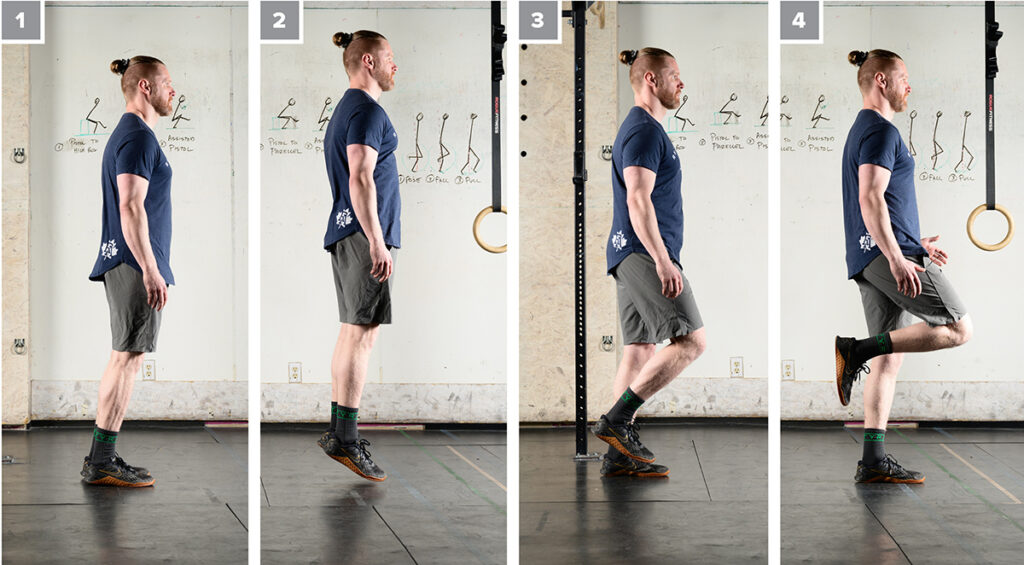
Goals & Cues
- We’re working on our mid-foot strike; meaning our whole foot lands on the ground under our body – as opposed to our heel out in front.
- We want to learn to quickly pull our feet off the ground, while allowing the momentum of our body to move us forward (rather than slamming our feet down).
- We want to take advantage of gravity to help us fall forward and run faster with less energy and fewer injuries.
Progressions & Drills
Use these drills as a warm-up on your running days. When you’re ready to progress to more advanced drills just do a quick google of pose method running drills.
- Quick hops to forward lean: Hop vertically on the balls of your feet while staying in place; slowly start to lean forward until your momentum begins to slowly move you forward. Think about flexing your butt to ensure you don’t end up leaning forward by bending at the hip. Stay as tall as you can with a slight forward lean and feel that momentum slowly cause you to move forward with your hops.
- Quick steps to forward lean: Staying in place, quickly lift your feet alternating between legs. Slowly start to lean forward (a few degrees) and allow momentum to move you, again keeping your core and butt tight. Keep your core and butt tight to ensure you don’t bend at the hip. Try not to step forward, instead thinking about pulling your feet off the ground and letting momentum from the lean carry you forward.
- Quick steps and pulls: If the above drills are making sense, now you can begin inserting a pull into every third step (one side at a time). Pull your ankle straight up like a zipper along the other leg – hitting the perfect figure-four position at the top of each pull.
- Still utilizing the same mechanics and not stepping forward, pull your feet off the ground and let the lean move you forward.
Follow Simon on Instagram and Facebook, or visit www.raincityathletics.ca.
Read this story in the digital edition of IMPACT Magazine.
Photography by Ronald Lee
IMPACT Magazine’s 2021 Running Issue
Looking for running inspiration? Training for a race? We have first-rate training programs designed by some of the best running coaches for your next 10K, Half-Marathon, Marathon and 70.3 distances, plus an epic Road Running Shoe Review to help you get started on the right foot. Plus – our annual RACE SOURCE GUIDE features hundreds of races that you can participate in from virtual to in-person.


